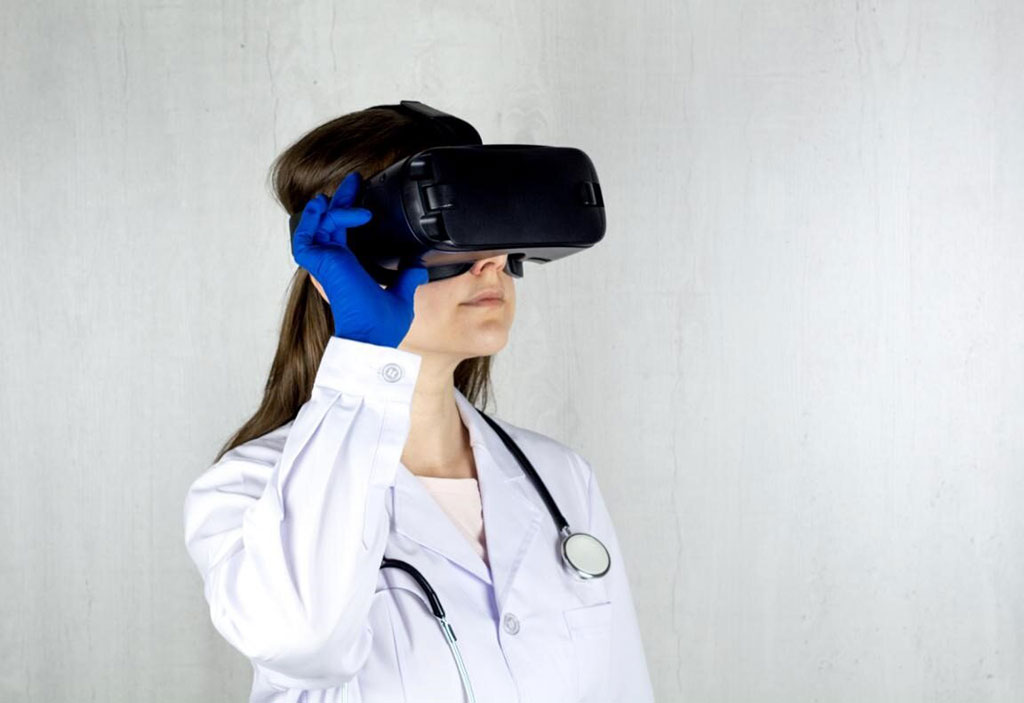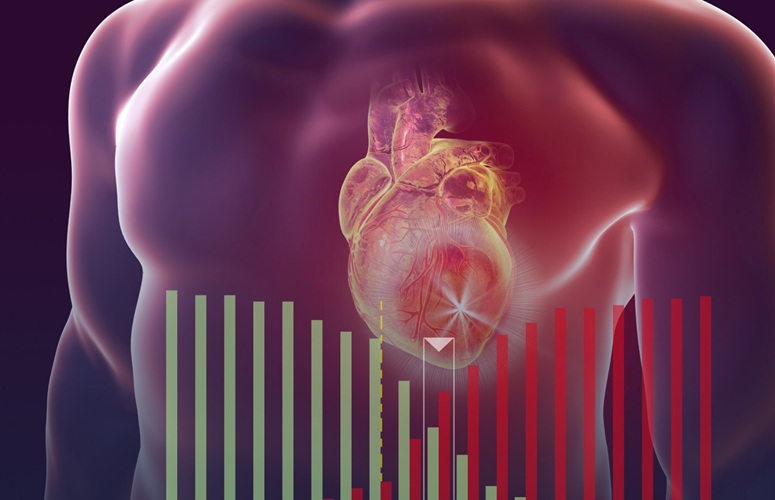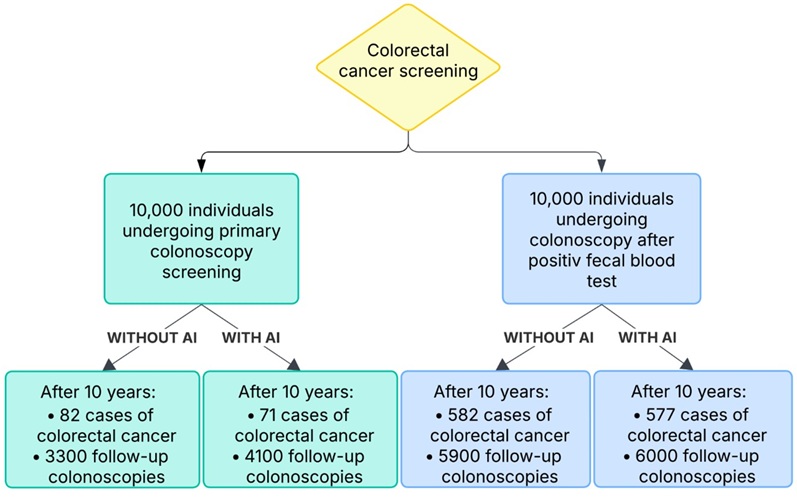Global Virtual Reality (VR) in Medical Market Driven by Increasing Use of VR in Surgical Training and Patient Treatment
|
By HospiMedica International staff writers Posted on 15 Mar 2022 |

The global virtual reality (VR) in medical market was valued at USD 0.44 billion in 2020 and is expected to register a CAGR of 31.1% during the forecast period 2021-28 to reach USD 3.98 billion in 2028, driven by the increasing use of VR in surgical training and patient treatment, rapid technological advancements in VR headsets, and growing application of VR in medical education.
These are the latest findings of Emergen Research (Surrey, BC, Canada), a market research and consulting company.
VR has been widely used in the field of healthcare over the recent past and is applied in a broad range of applications such as medical training, disease treatment, and medical education, among others. VR comprises output tools, input devices, graphical manufacturing system and information software of a virtual environment. VR has emerged as a powerful diagnostic tool to help doctors and physicians carry out accurate diagnosis in combination with other imaging tests, which can further eliminate the need for invasive techniques. VR is also being widely used in rehabilitation and treatment over conventional physiotherapy. The benefits of using VR is that it allows multiple repetitions of simple tasks in clinical practice without needing supervision, enables easy use of head-mounted devices in patients with mobility issues which ensures pleasurable and convenient environment, and facilitates easy collection of data for efficient monitoring of progress. The application of VR in surgical training can also drastically reduce probability of surgical errors, in turn, improving patient safety. Training and treatment through VR environments could save resources need for critical tasks, and this can further reduce the costs and financial burden on healthcare organizations.
Increasing applications of VR in the medical sector such as VR surgical simulators, telepresence surgery, complex medical database visualization, and rehabilitation are some of the key factors expected to drive the market growth over the forecast period. In addition, increasing research and development (R&D) in VR and technological advancements will allow surgeons to evaluate and practice new techniques on simulators before performing them on patients. This has the potential to significantly transform medical and surgical training and ensure precision and can further fuel market growth. However, technological limitations in various healthcare organizations, low adoption of VR technology across clinical facilities, and lack of adequate knowledge among professionals in the developing and underdeveloped countries regarding the benefits of VR in the healthcare sector are some of the factors that could hamper market growth to some extent during the forecast period.
Based on technology, the gesture tracking technology segment is expected to register the fastest growth due to the increasing application of gesture interaction for improving the efficiency of doctors in improving disease treatment, ensuring faster patient recovery, and facilitating interactivity in medical education and training. Gesture tracking technology enables doctors and surgeons to flip through patient data at any given time during the medical procedure which helps them improve surgical efficiency. Gesture tracking technology also helps reduce the probability of healthcare associated infections by enabling a touchless interface for patient data retrieval which is also expected to contribute to the segment’s revenue growth, going ahead. Based on end-use, the hospital segment is expected to account for largest revenue share of the VR in medical market due to the increasing adoption of VR systems and devices in hospitals, driven by rising awareness and availability of sufficient funds, availability of skilled healthcare professionals, increasing investments in accelerating advancement of healthcare facilities, and favorable reimbursement policies.
Geographically, North America is expected to account for the largest revenue share in the global VR in medical market due to rising awareness about the benefits of VR and its subsequent rapid adoption, increasing investments in R&D activities in the healthcare sector, growing healthcare expenditure, and presence of key market players in the region. In addition, rapid technological advancements in AR and VR devices, increasing initiatives to encourage the adoption of VR tech in surgical and medical training, and integration of advanced technologies such as EHRs and VR systems in the healthcare sector are expected to contribute further to the growth of the VR in medical market in North America.
Related Links:
Emergen Research
Latest Business News
- Expanded Collaboration to Transform OR Technology Through AI and Automation
- Becton Dickinson to Spin Out Biosciences and Diagnostic Solutions Business
- Boston Scientific Acquires Medical Device Company SoniVie
- 2026 World Hospital Congress to be Held in Seoul
- Teleflex to Acquire BIOTRONIK’s Vascular Intervention Business
- Philips and Mass General Brigham Collaborate on Improving Patient Care with Live AI-Powered Insights
- Arab Health 2025 Celebrates Landmark 50th Edition
- Boston Scientific Acquires Medical Device Company Intera Oncology
- MEDICA 2024 to Highlight Hot Topics of MedTech Industry
- Start-Ups To Once Again Play Starring Role at MEDICA 2024
- Boston Scientific to Acquire AFib Ablation Company Cortex
- Hologic Acquires Gynesonics to Strengthen Existing Gynecological Surgical Business
- Smith+Nephew and JointVue Partner on Ultrasound Preoperative Planning in Robotics-Assisted Surgery
- Stryker Completes Acquisition of NICO Corporation
- BD Completes Acquisition of Critical Care from Edwards Lifesciences
- ZOLL to Acquire Vyaire Medical’s Ventilator Business
Channels
Artificial Intelligence
view channel
Innovative Risk Score Predicts Heart Attack or Stroke in Kidney Transplant Candidates
Heart researchers have utilized an innovative risk assessment score to accurately predict whether patients being evaluated for kidney transplants are at risk for future major cardiac events, such as a... Read more
AI Algorithm Detects Early-Stage Metabolic-Associated Steatotic Liver Disease Using EHRs
Liver disease, which is treatable when detected early, often goes unnoticed until it reaches advanced stages. Metabolic-associated steatotic liver disease (MASLD), the most prevalent form of liver disease,... Read moreCritical Care
view channel
AI Eye Scans Could Help Identify Heart Disease and Stroke Risk
New research has explored the advantages of utilizing artificial intelligence (AI) retinal imaging for screening cardiovascular diseases in general practice (GP) clinics and highlighted areas where improvements... Read more
Digital Heart Twin Improves Diagnosis and Treatment of Cardiac Arrhythmias
Millions of individuals around the globe suffer from cardiac arrhythmias. Traditionally, electrocardiography (ECG) has been used to detect premature ventricular contractions (PVCs), one of the most common... Read more
First-Of-Its-Kind AI-Powered Probability Scoring System Assesses Heart Failure with Preserved Ejection Fraction
Heart failure with preserved ejection fraction (HFpEF) is one of the most difficult types of heart failure to diagnose due to the intricate interaction between various clinical and echocardiographic factors.... Read moreSurgical Techniques
view channel
New Transcatheter Valve Found Safe and Effective for Treating Aortic Regurgitation
Aortic regurgitation is a condition in which the aortic valve does not close properly, allowing blood to flow backward into the left ventricle. This results in decreased blood flow from the heart to the... Read more
Minimally Invasive Valve Repair Reduces Hospitalizations in Severe Tricuspid Regurgitation Patients
The tricuspid valve is one of the four heart valves, responsible for regulating blood flow from the right atrium (the heart's upper-right chamber) to the right ventricle (the lower-right chamber).... Read morePatient Care
view channel
Portable Biosensor Platform to Reduce Hospital-Acquired Infections
Approximately 4 million patients in the European Union acquire healthcare-associated infections (HAIs) or nosocomial infections each year, with around 37,000 deaths directly resulting from these infections,... Read moreFirst-Of-Its-Kind Portable Germicidal Light Technology Disinfects High-Touch Clinical Surfaces in Seconds
Reducing healthcare-acquired infections (HAIs) remains a pressing issue within global healthcare systems. In the United States alone, 1.7 million patients contract HAIs annually, leading to approximately... Read more
Surgical Capacity Optimization Solution Helps Hospitals Boost OR Utilization
An innovative solution has the capability to transform surgical capacity utilization by targeting the root cause of surgical block time inefficiencies. Fujitsu Limited’s (Tokyo, Japan) Surgical Capacity... Read more
Game-Changing Innovation in Surgical Instrument Sterilization Significantly Improves OR Throughput
A groundbreaking innovation enables hospitals to significantly improve instrument processing time and throughput in operating rooms (ORs) and sterile processing departments. Turbett Surgical, Inc.... Read moreHealth IT
view channel
Printable Molecule-Selective Nanoparticles Enable Mass Production of Wearable Biosensors
The future of medicine is likely to focus on the personalization of healthcare—understanding exactly what an individual requires and delivering the appropriate combination of nutrients, metabolites, and... Read more
Smartwatches Could Detect Congestive Heart Failure
Diagnosing congestive heart failure (CHF) typically requires expensive and time-consuming imaging techniques like echocardiography, also known as cardiac ultrasound. Previously, detecting CHF by analyzing... Read morePoint of Care
view channel
Handheld, Sound-Based Diagnostic System Delivers Bedside Blood Test Results in An Hour
Patients who go to a doctor for a blood test often have to contend with a needle and syringe, followed by a long wait—sometimes hours or even days—for lab results. Scientists have been working hard to... Read more
















